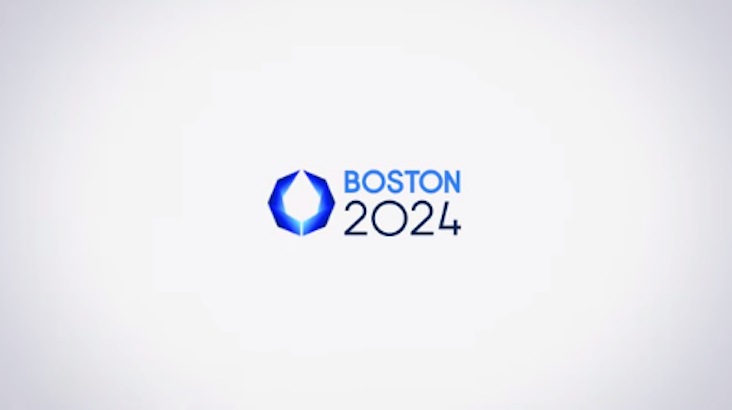
Boston was endorsed by the United State Olympic Committee as the American candidate to host the 2024 Summer Olympic Games. Though the bids for fellow candidates Los Angeles, San Francisco and Washington D.C. all fell in the same $4.5 billion range as Boston’s, the Hub separated itself from the pack in part by pitching its Olympic venue as a sustainable and walkable one.
It will be another two years before the International Olympic Committee selects a host city but Boston is setting into motion things that could help its candidacy in the meantime. That begins with advocacy group Boston 2024 releasing details of Boston’s bid to the public followed by discussion and action on what it actually means and entails to be a walkable host city.
“We are hoping to learn more & offer input in the coming months,” Brendan Kearney, communications manager for non-profit pedestrian advocacy organization WalkBoston, told BostInno. “There are lots of questions & have already reached out to the Boston 2024 committee and the Mayor’s office.”
There should be a focus on crafting more pedestrian-friendly environments in underserved communities
If Boston is chosen by the IOC, the population of the city will balloon in 2024 from the influx of spectators, officials and athletes on top of innumerable tourists and entrenched natives. For the city to accommodate everyone as easily as possible, it will need substantial upgrades to roads, sidewalks bike lanes and transit infrastructure – some of which projects are already in the works.
According to a feasibility study commissioned by Beacon Hill in February 2014, hotels could handle the population swell and that the dorms at its plentiful colleges and universities could house the athletes and officials.
It also states that commuter rail extensions, interstate highway interchange improvements, increased rail service and the lengthening of the Green and Silver lines are all initiatives that comprise MassDOT’s 10-year capital infrastructure plan.
“The Olympics aside, Greater Boston has to focus seriously on transportation and expanding the housing supply if it is going to realize its economic development potential,” Jim O’Connell, a professor in Boston University’s City Planning & Urban Affairs Department, told BostInno. “Other cities and regions are twisting themselves into contortions to develop the innovation economy and quality of life that Boston has. Boston needs expanded transportation and housing. And the Olympics may be the best way to obtain that.”
From what O’Connell’s heard, Boston’s bid fails to embrace the true walkability of the city though its not entirely the fault of the bidders. Boston’s density and lack of available land makes it difficult to build housing and facilities in close proximity to each other; however, that’s also what makes the higher-ed option so enticing.
Compared to the Hub, the Games in Beijing and London boasted a more concentrated Olympic Park with the main stadium, swimming and gymnastics facilities, and the Olympic Village close by.
“I have noticed that the Olympics proponents have emphasized the compactness of Boston’s proposed Games and that national commentators have picked up on that,” added O’Connell. “Boston would not have such a layout. In fact, it would be impossible for Boston to achieve such a compact layout because it lacks a sufficiently sized parcel of open land to achieve it.”
Cities like Foxboro, Lowell and Worcester have all been mentioned in talks of relocating some athletic events. For this, a sound and properly-funded infrastructure overhaul is paramount.
Boston needs expanded transportation and housing. And the Olympics may be the best way to obtain that.
Max Grinnell – an urbanologist, educator, speaker and writer – thinks that hosting the Olympics affords Boston the opportunity to improve housing and infrastructure, but in some of Boston’s outer-lying neighborhoods that aren’t as privy to such upgrades.
Offering up areas for sporting events like Harvard Stadium, Boston Common (beach volleyball), MIT (archery), Boston University (gymnastics), TD Garden (basketball), Allston Railroad Yards (swimming), Gillette Stadium (soccer), Somerville and Merrimack River (rowing) isolates the games to locations outside the city or within certain sections of the city proper.
“If the Olympics do happen, there should be a focus on crafting more pedestrian-friendly environments in underserved communities, such as Dorchester, Mattapan, Roxbury, and other areas,” said Grinnell. “Places like the Back Bay, Beacon Hill, and other well-heeled neighborhoods are in good shape, so why not attempt to create a measure of pedestrian equity (or justice, if you will) for areas that truly need it?”
Plans are sure to be more forthcoming once Boston’s bid is made public and the applicable officials begin brainstorming with residents, planners and designers. But it’s without a a doubt that restorations to public transit, housing and infrastructure will be a crucial factor in making the Games a success.
